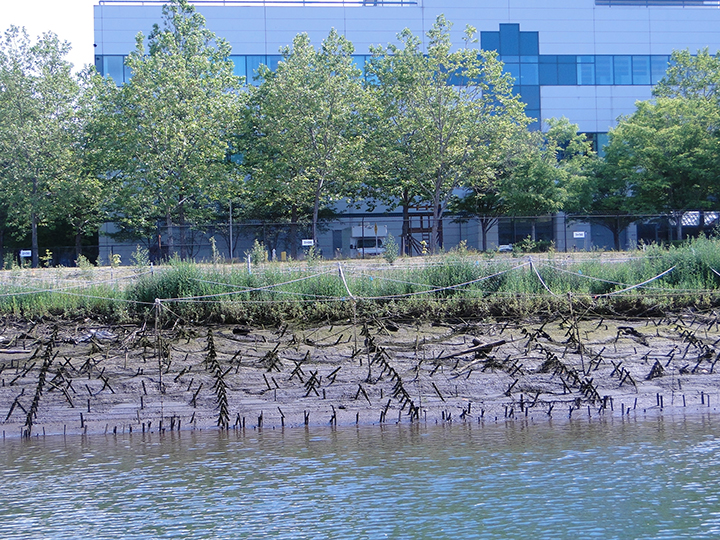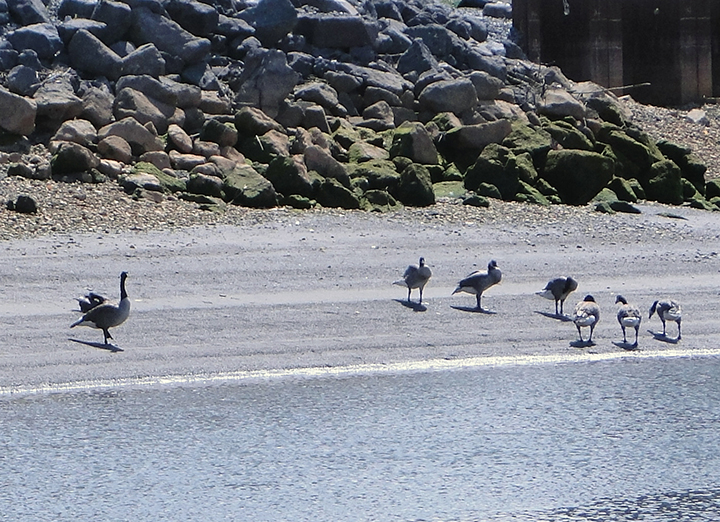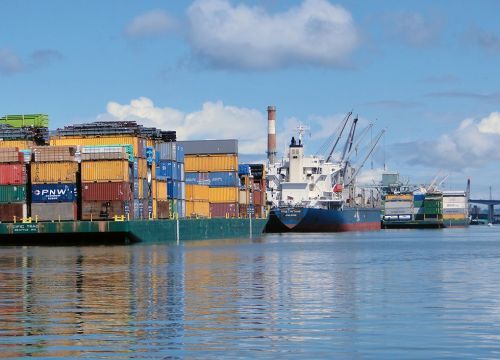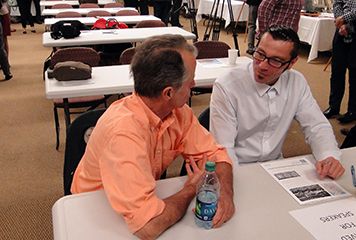From Building B-17 Bombers to Building Habitat for Fish: The Reshaping of an Industrial Seattle River
JUNE 30, 2015 -- Imagine living in as little as two percent of your home and trying to live a normal life. That might leave you with something the size of a half bathroom. Now imagine it's a dirty half bathroom that hasn't been cleaned in years. Gross, right? As Muckleshoot tribal member Louie Ungaro recently pointed out, that has been roughly the situation for young Chinook salmon and Steelhead trout for several decades as they pass through the Lower Duwamish River in south Seattle, Washington. Salmon and Steelhead trout, born in freshwater streams and creeks in Washington forests, have to make their way to the Puget Sound and then the ocean through the Duwamish River. However, this section of river has been heavily industrialized and lacks the clean waters, fallen trees, huge boulders, and meandering side channels that would represent a spacious, healthy home for young fish. Chair of his tribe's fish commission, Ungaro sent a reminder that the health of this river and his tribe, which has a long history of fishing on the Duwamish and nearby rivers, are closely tied. "We're no different than this river," he implored. Yet he was encouraged by the Boeing Company's recent cleanup and restoration of fish habitat along this Superfund site, a move that he hopes is "just a start."
The Pace—and Price—of Industry
Starting as far back as the 1870s and stretching well into the twentieth century, the Lower Duwamish River was transformed by people as the burgeoning city of Seattle grew. The river was straightened and dredged, its banks cleared and hardened. Factories and other development lined its banks, while industrial pollution—particularly PCBs—poured into its waters. More than 40 organizations are potentially responsible for this long-ago pollution that still haunts the river and the fish, birds, and wildlife that call it home. Yet most of those organizations have dragged their feet in cleaning it up and restoring the impacted lands and waters. However, the Boeing Company, a longtime resident of the Lower Duwamish River, has stepped up to collaborate in remaking the river.

Boeing's history there began in 1936 when it set up shop along 28 acres of the Duwamish. Here, the airplane manufacturer constructed a sprawling building known as Plant 2 where it—with the help of the women nicknamed "Rosie the Riveters"—would eventually assemble 7,000 B-17 bombers for the U.S. government during World War II. The Army Corps of Engineers even took pains to hide this factory from foreign spies by camouflaging its roof "to resemble a hillside neighborhood dotted with homes and trees," according to Boeing. But like many of its neighbors along the Duwamish, Boeing's history left a mark on the river. At the end of 2011, Boeing tore down the aging Plant 2 to prepare for cleanup and restoration along the Duwamish. Working with the City of Seattle, Port of Seattle, and King County, Boeing has already removed the equivalent of thousands of railcars of contaminated sediment from the river bottom and is replacing it with clean sand.
From Rosie the Riveter to Rosie the Restorer
By 2013, a hundred years after the Army Corps of Engineers reshaped this section of the Duwamish from a nine mile estuary into a five mile industrial channel, Boeing had finished its latest transformation of the shoreline. It planted more than 170,000 native wetland plants and grasses here, which are interspersed with large piles of wood anchored to the shore. Five acres of marsh and riverbank vegetation now line its shores, providing food, shelter, and calmer side channels for young fish to rest and grow as they transition from freshwater to the salty ocean.

Now the challenge is to keep the Canada geese from eating all of the tender young plants before they have the chance to establish themselves. That is why protective ropes and fencing surround the restoration sites. Already, biologists are beginning to see a change in the composition of the birds frequenting this portion of the river. Rather than the crows, starlings, and gulls typically associated with areas colonized by humans, birds such as herons and mergansers, a fish-eating duck, are showing up at the restoration sites. Those birds like to eat fish, which offers hope that fish such as salmon and trout are starting to make a comeback as well. Of course, these efforts are only the beginning. Through the Natural Resource Damage Assessment process, NOAA looks forward to working with other responsible organizations along the Duwamish River to continue restoring its health, both for people and nature now and in the future.
 An official website of the United States government.
An official website of the United States government. 

